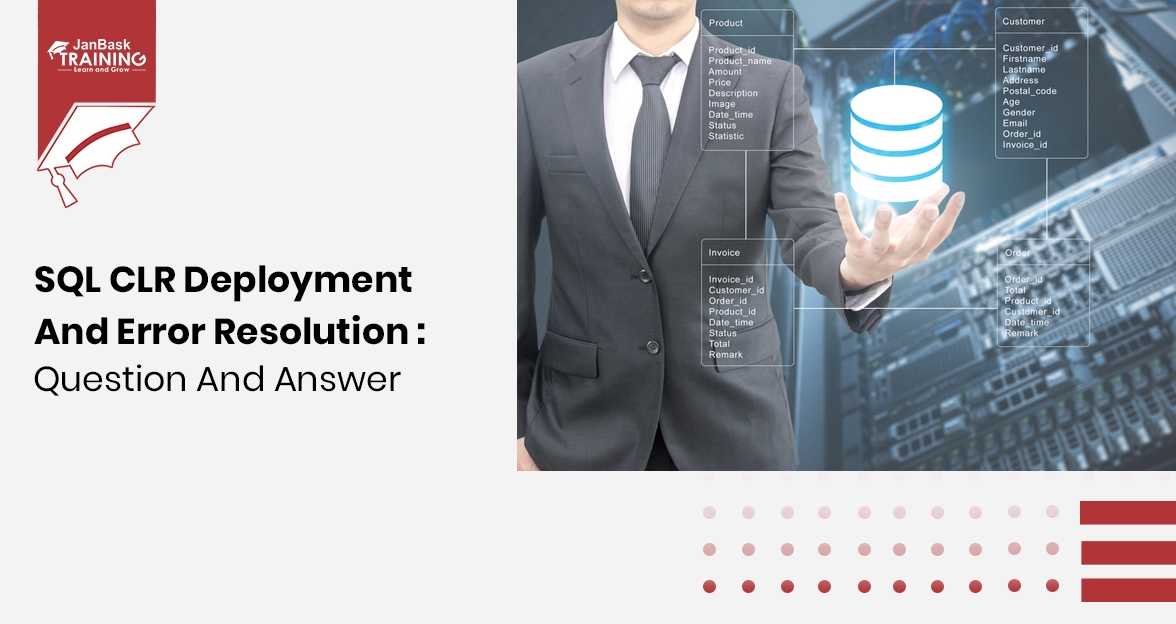 Grab Deal : Flat 30% off on live classes + 2 free self-paced courses - SCHEDULE CALL
Grab Deal : Flat 30% off on live classes + 2 free self-paced courses - SCHEDULE CALL

 Grab Deal : Flat 30% off on live classes + 2 free self-paced courses - SCHEDULE CALL
Grab Deal : Flat 30% off on live classes + 2 free self-paced courses - SCHEDULE CALL


SAS (Statistical Analytics System) is a popular tool for Data Analytics and is pretty easy to learn especially for those people who are friendly with SQL. SAS is one of the leading software systems for data analysis and report writing. Works amazingly when it comes to handling data management, advanced analytics, multivariate analysis, business intelligence, criminal investigation, and predictive analytics.
So, if you are tech-savvy and want to hire as a SAS expert then this post on sas logical interview questions is a perfect guide for you to learn all important sas interview questions that are useful to crack the job interview.
Here we have a list of top 50 sas interview questions that may be asked during your SAS interview. We have tried to cover basic, intermediate, and advanced concepts of SAS. This guide will help you with questions ranging from simple conceptual questions for fresher to advanced sas interview questions for experienced.
The questions are segregated based on the difficulty level and you can pick the most relevant section as per your level of expertise to reap the maximum benefits from this sas interview question guide.
Following are frequently asked SAS SQL Interview Questions for freshers as well as experienced to boost your sas interview preparation.
Answer
This is the most expected question asked by interviewers if you are a fresher. This is a software suite that is mainly needed for data analytics, business intelligence, data management, multivariate analysis, predictive analysis, etc. The concept was introduced by the SAS Institute and provides an interactive graphical user interface with plenty of advanced options by SAS language. The interface can be quickly accessed by non-technical users too and easy to learn by anyone.
Answer
Here Is a List of Reasons That Will Help You Explain Why Should You Choose Sas Over Other Data Analytics Tools –
Answer
SAS Tool Can Provide the Following Benefits for Your Business –
Answer
The SAS framework has four capabilities, these are Analyze, Access, Manage, and Represent.
Answer
Output statement is used to save the summary statistics in a SAS dataset. This information can be used further for creating more customized reports.
Answer
The STOP statement causes SAS to stop processing the current data step immediately and resume processing statements after the execution of the current data step.
Answer
If you are interested in processing a certain set of variables and don’t want to appear in the new dataset then the “drop = dataset” option is used in the set statement.
Answer
If you are not interested in processing a certain set of variables and don’t want to appear in the new dataset then the “drop = dataset” option is used in the data statement.
Answer
When data is accessed from some external file then only observations are considered and variables need to be declared again if you want to use them.
Answer
If you want to access data from the existing dataset then use the SET statement and values of variables will be retained from one observation to another.
Learn SQL Server in the Easiest Way
Learn SQL Server in the Easiest Way

Answer
They are divided into two categories majorly – Character and Numeric.
Answer
In the case of functions, the values of arguments are supplied across an observation. In the case of procedures, there is only one given to each variable.
Answer
The sum function will return the total of non-missing arguments and the “+” operator returns the missing value of any argument value left behind.
Answer
To read the last value from an unsorted dataset to appear in the new data set, end = data set option is used in SAS.
Answer
When a dollar ($) sign is added before a variable, the conversion process is blocked by the dollar sign and it is not converted to numeric values later.
Answer
Proc Means produces statistics for subgroups only if it is sorted first. On the other hand, Proc Summary can produce statistics for all groups automatically.
Answer
To delete the duplicate values in a dataset, use the “Proc SQL” command.
Answer
PROC SQL is a powerful Base SAS Procedure that combines the functionality of DATA and PROC steps into a single step. It can sort, summarize, subset, join (merge), and concatenate datasets, create new variables, and print the results or create a new table or view all in a single step
First of all, it will scan each statement for syntax errors. Now, it will decide how the SQL query should be executed in SAS. A particular table is loaded into the data engine and related calculations are performed. After this, the final table is created in the memory and it is sent to the OUTPUT table described in the SQL
Answer
For numeric to-character conversion, the put function is used. For the character-to-numeric conversion, the input function is used.
Answer
The maximum length is 200 characters.
SQL Server Training & Certification
SQL Server Training & Certification

Answer
To remove the repeated occurrence of a pattern of characters within a character string, TRANWRD function is used in SAS.
Answer
Scan, Trim, tranwrd, Catx, Substr, Index, Find, Sum.
Answer
|
Date |
SAS Date Value |
|
January 1, 1959 |
-365 |
|
January 1, 1960 |
0 |
|
January 1, 1961 |
366 |
|
January 1, 2003 |
15706 |
|
Dates in SAS |
|
A SAS date is a numeric value equal to the number of days since January 1, 1960. Also, there are plenty of tools that can be used to read printed data in SAS datasets.
Answer to SAS Logical Interview Questions:
Data finance; Amount=1000; Rate=.075/12; Do month=1 to 12; Earned +(amount+earned)*(rate); Output; End; Run;
Here, the total number of observations would be 12.
Answer to SAS Logical Interview Questions:
|
Do While |
Do Until |
|
|
|
|
|
|
Answer to SAS Logical Interview Questions:
It can be done by doing while and do until options in SAS.
Answer to SAS Logical Interview Questions:
data work; do i=1 to 20 until(sum>=200000); year+1; sum+2000; sum+sum*.10; end; run;
Here, the do loop will run until the sum does not become greater than or equal to 20000 or until the loop executes 10 times as per the given program.
Answer
Here is the general syntax is given for the scan function in SAS –
scan(argument,n,delimiters)
Here, arguments will define the expression that you want to scan, n will specify the total number of characters to read, and delimiters will specify how characters will be enclosed in a single quotation.
Answer
No, it should be defined as the character data type only.
Answer
Yes, it depends on how variables are used within a SAS program
Answer to Tricky SAS SQL Interview Questions:
The length can go up to 32,767 variables for a dataset in SAS.
Answer to Tricky SAS SQL Interview Questions:
They are generally different from each other but there are certain conditions when they could be the same as well.
Answer to Tricky SAS SQL Interview Questions:
They are the same for variables/columns in position order and rows ordered as they appear in the data set.
Answer to tricky SAS SQL interview questions:
The trailing @ option is used in column pointers to hold the line. At the same time, the trailing @ @ option is used to hold the line even more strongly.
Answer to Tricky SAS SQL Interview Questions:
When the variables are declared as the group variables then rows with the same values will be collapsed. At the same time, order variables are used to create summary reports and group variables are used for list reports.
Answer to Tricky SAS SQL Interview Questions:
These are the mean, standard deviation, n count, maximum, or minimum values, etc.
Answer to Tricky SAS SQL Interview Questions:
Use proc report and define the variable as a group variable to create the summary report.
Answer to tricky SAS SQL interview questions:
Define the MAXDEC= option, and you are done.
Answer to Tricky SAS SQL Interview Questions:
The Class Statement can be applied to any data set even if values are sorted properly or not.
Answer to Tricky SAS SQL Interview Questions:
The BY statement is used to instruct the DATA step or procedures to process dataset observations in groups, rather than singly. For the BY Statement, values must be first sorted before you use it.
SQL Server Training & Certification
SQL Server Training & Certification

Answer to SAS Analytics Interview Questions:
In the case of the Proc Means, reports are generated by default. On the other hand, you should use the Print option to generate a report in Proc Summary.
Answer to SAS Analytics Interview Questions:
It can be done by Table Statement.
Answer to SAS Analytics Interview Questions:
PROC FREQ is used for categorical variables and Proc Means is used for numeric variables in SAS.
Answer to SAS Analytics Interview Questions:
TABLES variable-1*variable-2 <*…..variable-n>/ LIST;
Answer to SAS Analytics Interview Questions:
You can combine merge or combine datasets this way:
data combined; merge data1 data2; run;
Answer to SAS Analytics Interview Questions:
The job of interleaving operation is to combine independent multiple sorted data sets into a single combined dataset.
data combined; set data1 data2; by year; run;
With this code, the dataset can be sorted and combined.
Answer to SAS Analytics Interview Questions:
One-to-one merge is a more suitable option to combine datasets in SAS.
Answer to SAS Analytics Interview Questions:
The APPEND procedure adds the observations from one SAS data set to the end of another SAS data set. PROC APPEND procedure does not process the observations in the first data set and adds the observations in the second data set directly to the end of the original data set.
Answer to SAS Analytics Interview Questions:
Well, you can use the BMDP procedure for deep data analysis.
Answer to SAS Analytics Interview Questions:
PROC UNIVARIATE is a procedure within SAS used primarily for examining the distribution of data, including an assessment of normality and discovery of outliers.
This blog “SAS Interview Questions for Freshers, Intermediates, and the advanced workforce” gives you a sound idea of questions that are usually asked by interviewers and helps you in cracking the interview with confidence. This list is not enough but you should consider taking online SSIS training or Learn SAS for free by availing our self-learning courses at a huge discount with JanBask Training.
Moreover, if you are not sure of online training classes and their benefits, register for a demo class and clear all your doubts by interacting with certified mentors during the LIVE session. On the completion of the SSIS online training, you will learn to swim in the career pool of database tools and how they can be used for robust data management. All the Best!

SQL Server MERGE Statement: Question and Answer


Mastering INSERT and OVER DML Syntax: Interview Questions Guide

SQL CLR Deployment and Error Resolution: Question and Answer

Cyber Security

QA

Salesforce

Business Analyst

MS SQL Server

Data Science

DevOps

Hadoop

Python

Artificial Intelligence

Machine Learning

Tableau
Download Syllabus
Get Complete Course Syllabus
Enroll For Demo Class
It will take less than a minute
Tutorials
Interviews
You must be logged in to post a comment